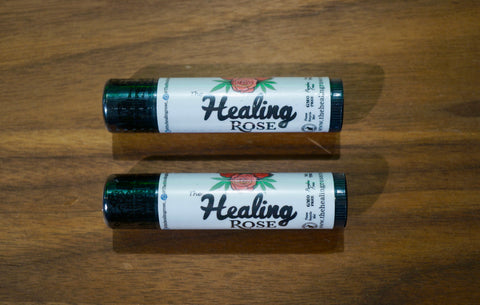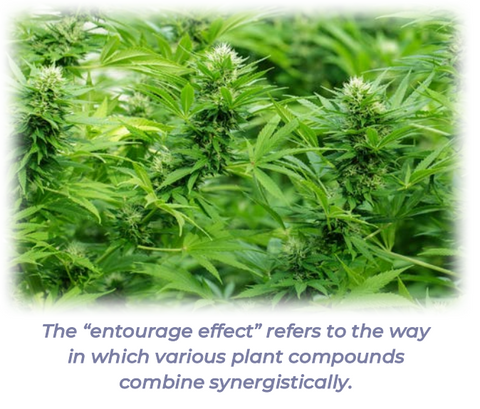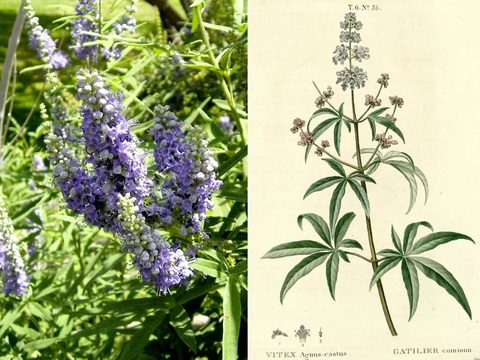In 2009, a handful of CBD-rich cannabis strains were discovered serendipitously in Northern California, America’s cannabis breadbasket, where certified patients could access medical marijuana legally. Thus began a great laboratory experiment in democracy involving CBD-rich cannabis therapeutics.
The advent of whole plant CBD-rich oil as a grassroots therapeutic option has changed the national conversation about cannabis. It’s no longer a question of whether medical marijuana works—today the key question is how to use cannabis for maximum therapeutic benefit.
But most health professionals have little experience in this area. So Project CBD has created a CBD User’s Manual for patients that addresses key questions about cannabidiol and cannabis therapeutics.
WHAT IS CBD?
Cannabidiol or CBD is a non-intoxicating component of the cannabis plant with enormous therapeutic potential. Although CBD doesn’t make people feel high like THC does, it’s causing quite a buzz among scientists, health professionals, and medical marijuana patients who are using CBD-rich products to treat a wide range of conditions—chronic pain, cancer, Crohn’s, diabetes, rheumatoid arthritis, PTSD, cardiovascular disease, anxiety, antibiotic-resistant infections, multiple sclerosis, schizophrenia, and more. Academic research centers in the United States and elsewhere are currently studying the effects of CBD on these and other ailments. Scientists refer to CBD as a “promiscuous” compound because it confers therapeutic benefits in many different ways while tapping into how we function physiologically and biologically on a deep level. Extensive preclinical research and some clinical studies have shown that CBDhas strong anti-oxidant, anti-inflammatory, anticonvulsant, anti-depressant, anti-psychotic, anti-tumoral, and neuroprotective qualities. Cannabidiol can change gene expression and remove beta amyloid plaque, the hallmark of Alzheimer’s, from brain cells.
WHICH IS BETTER CBD OR THC?
Cannabidiol and THC (The High Causer) are the power couple of cannabis therapeutics; they work best together. CBD and THC interact synergistically to potentiate each other’s curative qualities. CBD enhances THC’s painkilling and anticancer properties, while lessening THC’s psychoactivity. CBD can also mitigate adverse effects caused by too much THC, such as anxiety and rapid heartbeat. When both compounds are present in sufficient amounts in the same cannabis strain or product, CBD will lower the ceiling on the THChigh while prolonging its duration. (“Relaxing but not intoxicating” is how one patient described CBD-rich cannabis.) CBD broadens the range of conditions treatable with cannabis, such as liver, cardiovascular and metabolic disorders, which may be less responsive to THC-dominant remedies. CBD and THC both stimulate neurogenesis, the creation of new brain cells, in adult mammals.
WHAT’S THE BEST WAY TO TAKE CBD?
The most appropriate delivery system for CBD-rich cannabis is one that provides an optimal dose for a desired duration with few unwanted side effects. CBD-rich cannabis flower varietals for smoking or vaping are available in many medical marijuana dispensaries, but most CBD patients prefer non-inhalable products made with cannabis oil concentrates. Although banned by federal law, measurable doses of potent CBD-rich cannabis remedies are available in many non-smokable forms and can be utilized in various ways. The time of onset and duration of effect vary depending on the method of administration. CBD-rich cannabis oil products can be taken sublingually, orally (as edibles, lozenges, beverages, tinctures, and gel caps), or applied topically. Concentrated cannabis oil extracts can also be heated and inhaled with a vape pen. Inhalation is good for treating acute symptoms that require immediate attention; the effects can be felt within a minute or two and typically last for a couple of hours. The effects of orally administered CBD-rich cannabis oil can last for four hours or more, but the onset of effects is much slower (30-90 minutes) than inhalation.
CAN CBD CURE EPILEPSY?
Marijuana has a rich history as a medicine for quelling seizures and convulsions going back thousands of years. In the mid-19th century, the U.S. Pharmacopeia listed cannabis tincture as a treatment for pediatric epilepsy, and subsequent scientific studies have documented the anticonvulsant effects of CBD, THC, and whole plant cannabis. CBD-dominant/low- THC cannabis strains and oil extracts can facilitate dramatic improvement in some children with intractable seizure disorders. Between 10-15 percent of severe childhood epileptics who are given CBD oil products experience a near complete cessation of seizures; most improve (with a decrease but not total elimination of seizures); and some children have worse seizures when they take CBD. Many parents of epileptic children have learned through trial and error that augmenting CBD-rich oil by adding some THC—or better yet, THCA, the unheated, non-psychoactive form of THC that’s present in raw cannabis flowers and leaves—helps with seizure control. The take-home message: Low-THC cannabis oil products don’t work for everyone. Patients of all ages need access to a wide spectrum of whole plant cannabis remedies, not just high CBD oil.
WHAT IS THE RIGHT CBD:THC RATIO FOR ME?
Cannabis therapeutics is personalized medicine. There is no single ratio or strain or product that’s right for everyone. Optimize your therapeutic use of cannabis by finding the proper combination of CBD and THC that works best for you. A person’s sensitivity to THC is a key factor in determining the appropriate ratio and dosage of CBD-rich medicine. Many people enjoy the cannabis high and can consume reasonable amounts of any cannabis product without feeling too high or dysphoric. Others find THC unpleasant. CBD can lessen or neutralize the intoxicating effects of THC. So a greater ratio of CBD-to- THC means less of a high. In some states with medical marijuana laws, cannabis oil concentrates and other products with varying ratios of CBD:THC are available so users can adjust or minimize psychoactive effects to suit their needs and sensitivities. Those who don’t like THC have the option of healing without the high by using a CBD-rich remedy with only a small amount of THC. But a low THC remedy, while not intoxicating, is not always the most effective treatment option. In essence, the goal is to administer consistent, measurable doses of a CBD-rich remedy that includes as much THC as a person is comfortable with.
ARE SPECIFIC CBD:THC RATIOS BETTER FOR DIFFERENT CONDITIONS?
Some patterns are beginning to emerge. For anxiety, depression, spasms, psychosis, and seizure disorders, many people report they do well starting with a small dose of a CBD-rich remedy with little THC. For cancer, autism, and many other diseases, some say they benefit more from a balanced ratio of CBD and THC. Extensive clinical trials conducted outside the United States have shown that a 1:1 CBD:THC ratio can be effective for neuropathic pain. Some people use cannabis products with different CBD:THC ratios at different times of the day (more CBD for sunlight hours, more THC at night). Almost any cannabis strain or product theoretically could benefit a wide range of autoimmune and inflammatory disorders because THCand other cannabis components activate the CB2 cannabinoid receptor, which regulates immune function. Note: The CBD:THC ratio in not an indication of how much CBD or THC is present in a given cannabis product or strain.
WHAT IS THE OPTIMAL DOSAGE OF CBD?
An effective dosage can range from as little as a few milligrams of CBD-enriched cannabis oil to a gram or more. Begin with a small dose of high CBD/low THC oil, especially if you have little or no experience with cannabis. Take a few small doses over the course of the day rather than one big dose. Use the same dose and ratio for several days. Observe the effects and if necessary adjust the ratio or amount. Don’t overdo it. Cannabis compounds have biphasic properties, which means that low and high doses of the same substance can produce opposite effects. Small doses of cannabis tend to stimulate; large doses sedate. Too much THC, while not lethal, can amplify anxiety and mood disorders. CBD has no known adverse side effects, but an excessive amount of CBD could be less effective therapeutically than a moderate dose. “Less is more” is often the case with respect to cannabis therapy.
WHAT SHOULD ONE LOOK FOR WHEN CHOOSING A CBD-RICH PRODUCT?
Look for products with clear labels showing the quantity and ratio of CBD and THC per dose, a manufacturing date, and a batch number (for quality control). Select products with quality ingredients: No corn syrup, transfats, GMOs, artificial additives, thinning agents or preservatives. CBD-rich products should be lab tested for consistency and verified as being free of mold, bacteria, pesticides, solvent residues, and other contaminants. Best to avoid products extracted with toxic solvents like BHO, propane, hexane or other hydrocarbons. Opt for products that utilize safer extraction methods such as supercritical CO2 or food-grade ethanol.
IF CBD IS SO GOOD, WON’T PURE CBD BE EVEN BETTER?
Single-molecule CBD will inevitably become a federally approved Big Pharma medicine. Products infused with a crystalline CBD isolate, derived and extensively refined from industrial hemp, are already being marketed by unregulated internet storefronts. But single-molecule CBD is less effective therapeutically than whole plant CBD-rich oil extract. Scientific studies have established that synthetic, single-molecule CBD has a very narrow therapeutic window and requires precise, high doses for efficacy, whereas lower dose, whole-plant, CBD-rich treatment regimens are already showing efficacy for many conditions among patients in medical marijuana states. Whether synthesized in a Big Pharma lab or derived from industrial hemp, single-molecule CBD lacks critical secondary cannabinoids and other medicinal compounds found in high-resin cannabis strains. These compounds interact with CBD and THC to enhance their therapeutic benefits. Scientists call this the “entourage effect.” Numerous cannabis compounds have medicinal attributes, but the therapeutic impact of whole plant cannabis is greater than the sum of its parts.
IS THERE A DIFFERENCE BETWEEN CBD DERIVED FROM HEMP AND CBD DERIVED FROM MARIJUANA?
If you live in a state where medical marijuana is legal and available, look for CBD products made from high-resin cannabis (rather than low resin industrial hemp) that are sold in medical marijuana dispensaries. Hemp-derived CBD-infused products of varying quality are also available via dozens of internet storefronts. Compared to whole plant CBD-rich cannabis, industrial hemp is typically low in cannabinoid content. A huge amount of hemp is required to extract a small amount of CBD, thereby raising the risk of contaminants because hemp, a bioaccumulator, draws toxins from the soil. That’s a great feature for restoring a poisoned ecosystem, but it’s not recommended for extracting medicinal oil. Heavily refined CBDpaste or terpene-free CBD powder is poor starter material for formulating CBD-rich oil products. The FDAhas tested dozens of so-called CBD “hemp oil” products and found that in many cases these products contained little or no CBD. CBD-infused nutraceuticals have not been approved by the FDA as food supplements; nor are these products legal in all 50 U.S. states. By and large, however, interstate CBDcommerce is tolerated by federal authorities.
IS IT SAFE TO INHALE HEMP CBD OIL FUMES FROM A VAPE PEN?
Many cannabis- and hemp-derived CBD vape oil products include a thinning agent, which dilutes the oil that is heated and inhaled by vape pen users. Beware of vape pen oil that contains propylene glycol. When overheated, this chemical additive produces formaldehyde, a carcinogen, as a byproduct, according to a 2015 report in the New England Journal of Medicine. Why do so many vape oil products contain this thinning agent? It’s because of the dubious quality of the extracted material from which these unregulated cannabis oil products are made.
DOES CBD HAVE ANY ADVERSE SIDE EFFECTS? WHAT ABOUT DRUG INTERACTIONS?
CBD is a very safe substance, but patients taking other medications should check with their doctor about drug interactions, which are more likely when consuming high doses of single-molecule CBD products. At sufficient dosages, CBD will temporarily deactivate cytochrome P450 enzymes, thereby altering how we metabolize a wide range of compounds, including THC. Cytochrome P450 enzymes metabolize more than 60 percent of Big Pharma meds. CBD is a more potent inhibitor of cytochrome P450 than the grapefruit compound Bergapten, so ask your doctor if grapefruit interacts with your medication. If grapefruit does, then CBD probably does, too. Patients on a CBD-rich treatment regimen should monitor changes in blood levels of prescription medications and, if need be, adjust dosage.
See the whole guide on projectcbd.org








